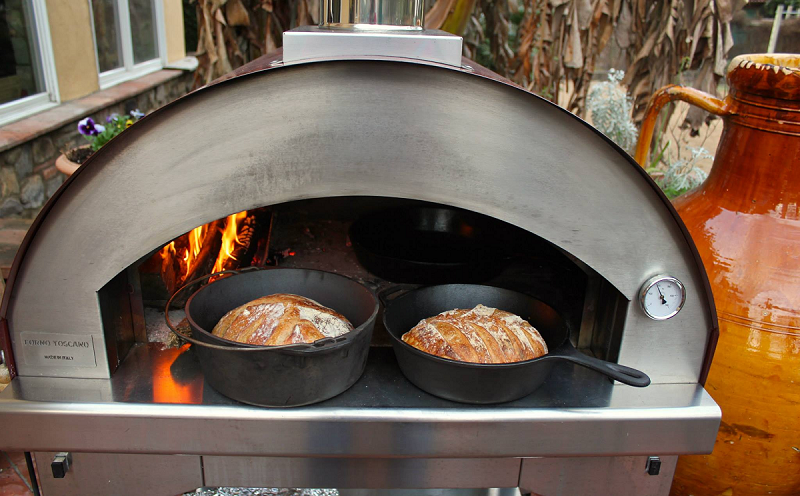How to Cook With Cast Iron

Cast iron is one of the most versatile cooking platforms. When you take care of your cast iron pots and pans, they can last for generations and, really, they only get better with time. They don’t chip or scratch like most nonstick pans, and they can withstand temperatures that normal cookware/bakeware can’t even touch.
However, some people are intimidated by the use of cast iron, especially when you’re trying to use it in an outdoor oven with open flames or in extremely high temperatures.
The good news? You don’t have to be overwhelmed by cooking with cast iron. Whether you’re using it indoors or with an outdoor countertop oven, you can sear meats and make everything from deep-dish pizza and casseroles to fried chicken and skillet cookies with cast iron.
So, let’s take a look at how to care for and cook with this long-lasting material.
Cast Iron Care
Before you cook with a cast iron skillet or pot, it’s important to know how to properly care for it so it will last for years without getting dirty or rusty.
Whether your cast iron is brand new or it was your grandmother’s, you always want to season it. That means giving it a good scrub, for starters. You’ll want to scrub it down using steel wool and mild dish soap with hot water. Some say never use mild soap on cast iron, but a mild soap is perfectly safe. What you want to avoid is letting your pan soak in water when trying to clean it. That is something you should not do. If your pan is used, cleaning it in this fashion will get rid of any build-up and get you down to the base layer of the pan.
It’s important to make sure your cast iron is completely dry after you’ve washed it, or it will rust. So, once you’ve rinsed it off, towel dry it, and then place it in a hot oven to steam away any lasting bits of moisture.
The real “seasoning” portion involves putting just a small drop of neutral oil (like flaxseed oil) into your skillet and wiping it around with a paper towel. Cast iron is a porous surface, so the oil will seep into it and help to keep it non-stick. Just don’t use too much, or the cast iron can become sticky and the oil can become rancid.
Once you’ve coated your skillet with oil, stick it in a 450-degree oven or an outside oven—the hotter the better! Place it in the oven upside down to allow the oil to bond with the cast iron. Keep it in the oven for about an hour, turn off the heat, and let it cool off completely while still in the oven.
This is a process that should be done as needed, but a good rule of thumb is to do it twice a year to keep your cast iron in good shape.
The Best Way to Cook with a Cast Iron Skillet

Once you’ve taken proper care of your skillet and you’ve seasoned it, it should be easy to work with and will be naturally non-sticking. Yet, there are a few general rules to keep in mind to get the best results, whether you’re searing a steak or cooking a casserole.
One of the most important things you should do is to preheat your skillet ahead of time. Let it sit over medium heat on the stovetop for 5-10 minutes so it’s heated evenly all the way through before you start cooking.
When you’re cooking food in cast iron, it’s also a good idea to leave it alone. Remember, you went through all that work to properly season it, so let the nonstick aspect of the cookware do its job. If you move the food around too much, it might start to stick and could create a buildup on your cookware.
Cast iron is nearly indestructible, and the sky’s the limit when it comes to the types of things you can cook indoors or outside. So, make sure you take the time to care for your cast iron the right way, and you’ll be able to pass it down to the next generation and beyond!
If you already love cooking with cast iron or you want to give it a try, using it in an outside oven will give you great results! Contact us today to learn more about outdoor woodfired ovens and how they can benefit your backyard.



